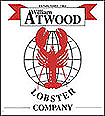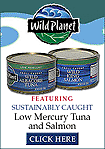
New
Study Validates Natural Cork's Green Credentials
SANTA
MARIA DE LAMAS, PORTUGAL, January 15, 2009 - Corticeira
Amorim, the world's leading producer of natural cork wine stoppers,
recently issued the results of an independent study by PricewaterhouseCoopers.
The study clearly shows the environmental superiority of natural
cork stoppers over alternative wine closures.
The
year-long study found that CO2 emissions - a key factor in global
warming - resulting from the life cycle of a screwcap are 24
times higher than those from a natural cork stopper, while a
plastic stopper is responsible for 10 times more CO2 than a
natural cork.
"Our
objectives in the study were to identify opportunities to improve
the environmental performance of cork stoppers and provide the
wine industry with detailed figures in relation to the full
environmental impact of different closures," said Amorim
Chairman & CEO António Amorim. "Now, after a
rigorous independent external critical review, we are able to
publish the results of this study."
The
study found that CO2 emissions during the life cycle (production,
transport, associated packaging and end of life) of 1,000 cork
stoppers amounts to 1,533g of carbon dioxide equivalent (CO2e)
over 100 years, while the figure for plastic stoppers is 14,833g
of CO2e per 1,000 stoppers and for screwcaps 37,172g of CO2e
per 1,000 stoppers.
The
figure (for both cork and plastic stoppers) includes allowance
for the transport of he corks from Portugal, plastic stoppers
from Belgium, and aluminum closures from France to the UK for
bottling. The figure also accounts for the use of a PVC capsule
for bottles sealed with a natural cork or synthetic closure.
The
study included analyses of seven key environmental indicators:
the emission of greenhouse gases; consumption of non-renewable
energy; consumption of water; contribution to the acidification
of the atmosphere; contribution to the deterioration of the
ozone layer; contribution to eutrophication (nutrient buildup);
and production of solid waste.
Cork
stoppers emerged as the best alternative against six indicators
and were placed second, behind aluminum closures, in relation
to water consumption. The PricewaterhouseCoopers study underwent
a critical review by three independent entities, including a
life cycle analysis expert, and was conducted in line with ISO
14040 and 14044 standards. Under these standards, the least
favorable scenario for the sponsor of the study (Corticeira
Amorim) was taken at all times. In addition, the analysis did
not consider the environmental impacts associated with the process
of transforming aluminum into screwcaps and raw materials into
plastic stoppers.
In
2006 and 2007 Corticeira Amorim prepared sustainability reports
that highlighted the crucial role of cork forests in carbon
dioxide retention, preserving biodiversity and combating desertification
as well as the role of cork manufacturing in sustainable development.
Mr.
Amorim said commissioning the life cycle analysis added to the
company's strong knowledge base on sustainability issues relating
to its products. "Many sectors of the global wine industry
are working hard to reduce their environmental impact. This
study again highlights the role that natural cork can play in
that process," he said.
"Natural
cork is the only closure option for winemakers, distributors
and retailers who want to minimize their carbon footprint and
adopt best practices in relation to environmental performance.
We are their natural CO2-retention partner in these efforts."
The
full 2008 PricewaterhouseCoopers life cycle analysis report
and a summary presentation are available at www.corkfacts.com
and www.amorim.com














